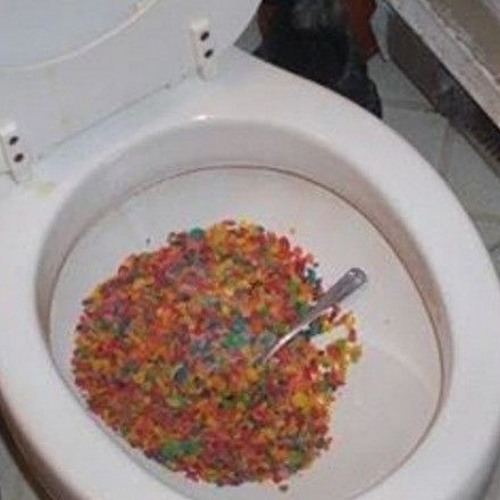We've uncovered this article pertaining to Is it safe to flush food (especially rice) down the toilet? down the page on the internet and reckoned it made good sense to quickly share it with you on this page.

Introduction
Many individuals are usually confronted with the problem of what to do with food waste, especially when it comes to leftovers or scraps. One common question that emerges is whether it's alright to purge food down the bathroom. In this short article, we'll look into the reasons why people could think about purging food, the consequences of doing so, and alternate methods for appropriate disposal.
Reasons that people may take into consideration purging food
Absence of awareness
Some individuals might not know the potential damage triggered by flushing food down the commode. They might incorrectly believe that it's a harmless method.
Benefit
Flushing food down the bathroom might look like a fast and very easy remedy to getting rid of unwanted scraps, particularly when there's no nearby trash can readily available.
Idleness
In many cases, people might simply pick to flush food out of large negligence, without taking into consideration the repercussions of their activities.
Consequences of flushing food down the bathroom
Ecological influence
Food waste that ends up in waterways can add to air pollution and injury water ecological communities. Additionally, the water utilized to flush food can stress water sources.
Pipes issues
Flushing food can bring about clogged up pipelines and drains, causing expensive plumbing repairs and troubles.
Sorts of food that should not be purged
Fibrous foods
Foods with fibrous textures such as celery or corn husks can get tangled in pipelines and create obstructions.
Starchy foods
Starchy foods like pasta and rice can soak up water and swell, causing clogs in pipelines.
Oils and fats
Greasy foods like bacon or food preparation oils must never ever be flushed down the commode as they can solidify and cause blockages.
Correct disposal techniques for food waste
Using a garbage disposal
For homes equipped with garbage disposals, food scraps can be ground up and purged through the pipes system. Nevertheless, not all foods appropriate for disposal in this way.
Recycling
Specific food packaging materials can be recycled, minimizing waste and decreasing ecological influence.
Composting
Composting is an environment-friendly means to deal with food waste. Organic materials can be composted and made use of to improve dirt for gardening.
The importance of correct waste monitoring
Lowering environmental injury
Correct waste administration practices, such as composting and recycling, assistance lessen pollution and protect natural resources for future generations.
Safeguarding plumbing systems
By staying clear of the practice of flushing food down the bathroom, homeowners can stop pricey pipes repair work and preserve the honesty of their pipes systems.
Final thought
To conclude, while it might be appealing to flush food down the toilet for ease, it is very important to understand the prospective effects of this activity. By embracing correct waste monitoring techniques and getting rid of food waste properly, individuals can add to much healthier pipes systems and a cleaner atmosphere for all.
FLUSH FOOD DOWN THE TOILET?
FLUSHING FOOD CAN CAUSE BLOCKED DRAINS IN YOUR HOME
All of the plumbing fixtures in your home are connected to the same sewer pipe outside of your home. This outdoor sewer pipe is responsible for transporting all the wastewater from your home to the Council sewer mains. Even small pieces of food that go down the kitchen sink can cause problems for your sewer. It should therefore be obvious that flushing larger bits of food, such as meat, risks a clog in either the toilet itself or the sewer pipes. Flushing greasy food is even more problematic because oil coagulates when it cools, coating the interior lining of your pipes.
THE TOILET IS NOT A BIN
Food isn’t the only thing that people shouldn’t be flushing down the toilet. People use the toilet to dispose of all kinds of things such as tampons, makeup wipes, dental floss, kitty litter and even underwear. Water goes to great lengths to educate residents about the high costs and stress placed on wastewater treatment systems simply from people flushing the wrong stuff down the toilet. It costs taxpayers millions of dollars each year, and homeowners thousands in blocked drain repairs.
FLUSHING FOOD IS A WASTE OF WATER
Flushing food is a waste of our most precious resource - water. In June this year Level 1 water restrictions were introduced to protect water supply from drought conditions. Much of New South Wales continues to be affected by prolonged drought with recent figures revealing up to 97 per cent of the state remains in drought. Depending on whether you have a single or dual flush toilet, every single flush uses between five and 11 litres of water. In the current climate this is a huge amount of water to be wasting on flushing food that should be placed in the bin (or better yet, the compost).
https://www.jabplumbingsolutions.com.au/blog/can-you-flush-food-down-the-toilet

I hope you liked our part on What Can Happen If You Flush Food Down the Toilet?. Thanks so much for spending some time to read through our piece. Are you aware of somebody who is fascinated by the subject? Why not promote it. Thank you for going through it.
Call Today
Comments on “Is it Logical to Flush Food in the Toilet?”